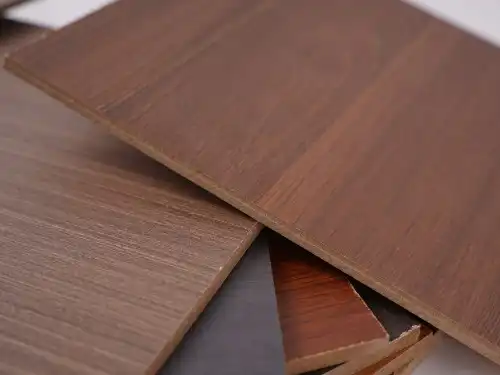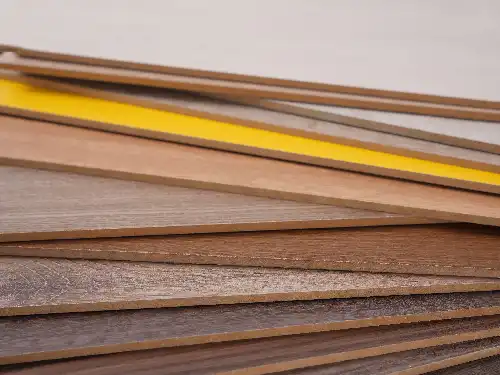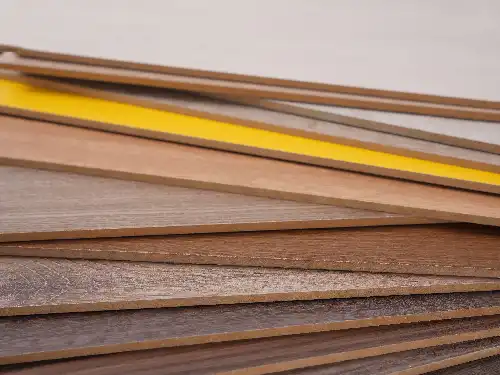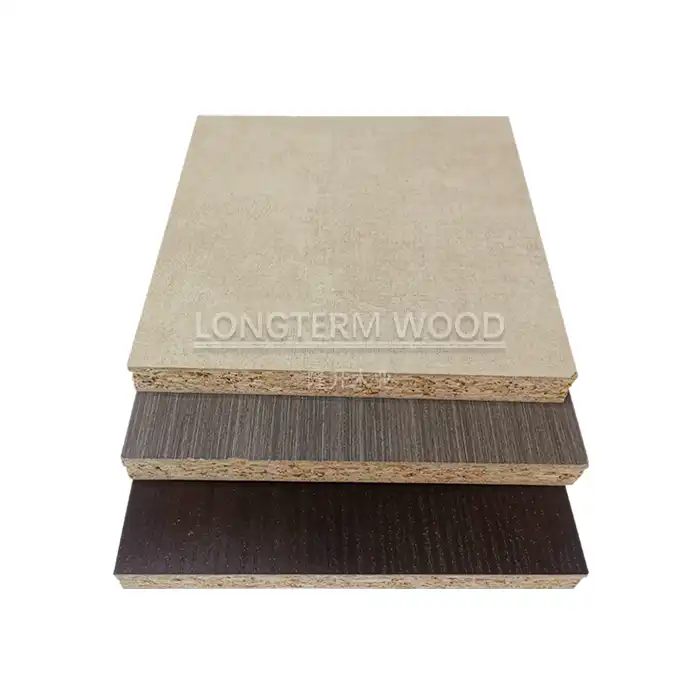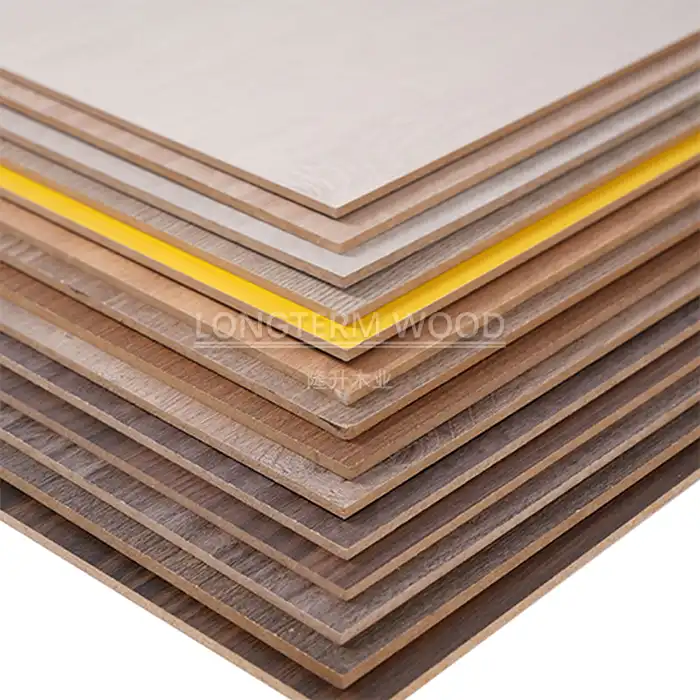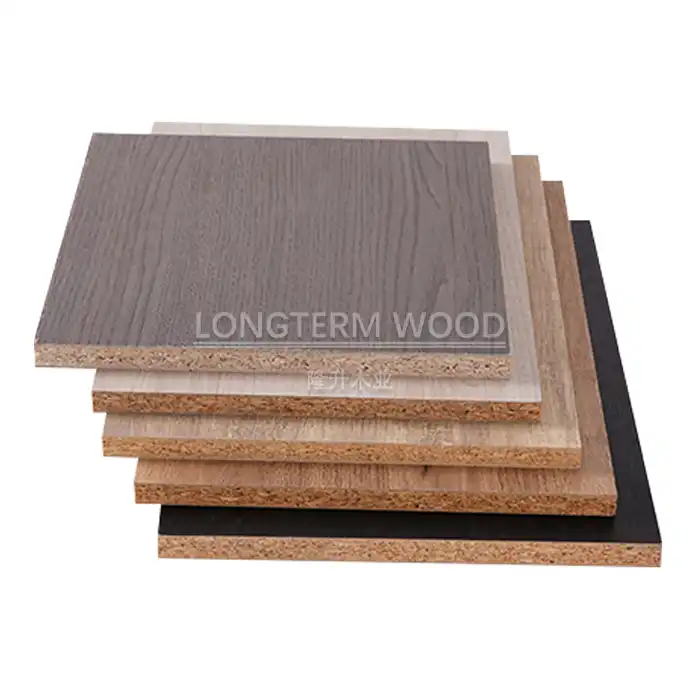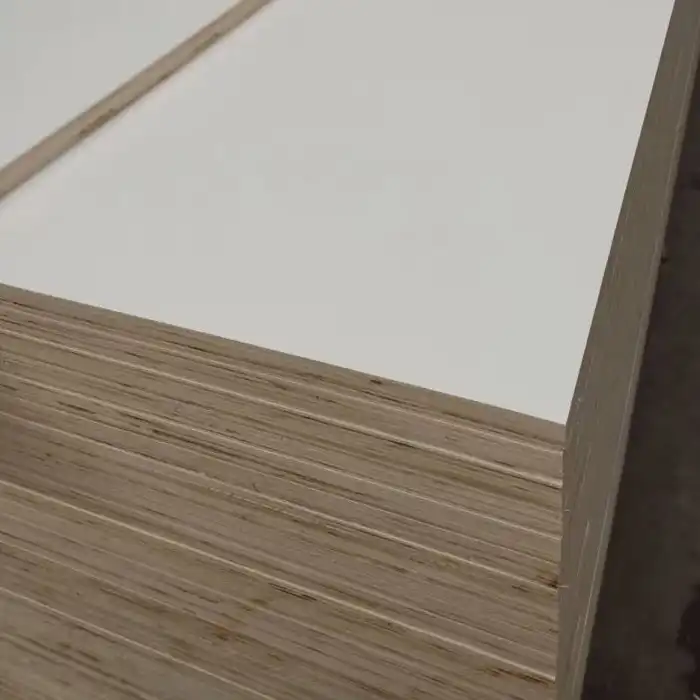
How Does Melamine Plywood Contribute to Modern Aesthetics?
2025-04-28
In the ever-evolving world of interior design and furniture manufacturing, melamine plywood has emerged as a revolutionary material that seamlessly blends functionality with aesthetic appeal. This versatile engineered wood product has transformed modern design landscapes by offering designers and manufacturers a perfect canvas to express their creative vision while ensuring durability and practicality. Melamine plywood consists of a plywood core covered with melamine-impregnated decorative paper, creating a surface that's not only visually striking but also highly resistant to daily wear and tear. Its contribution to modern aesthetics cannot be overstated, as it enables sleek, contemporary designs with clean lines and vibrant finishes that define today's architectural and interior design trends.
The Visual Impact of Melamine Plywood in Contemporary Design
Transforming Spaces with Texture and Color
Melamine plywood has revolutionized the way designers approach texture and color in modern interiors. Unlike traditional wood materials that offer limited finish options, melamine plywood provides an extraordinarily diverse palette of colors, patterns, and textures that can transform any space instantly. From ultra-smooth high-gloss whites that reflect light and create an impression of spaciousness to richly textured wood grain finishes that bring warmth and character, melamine plywood offers unparalleled design flexibility. The precision with which manufacturers can reproduce natural materials is remarkable – wood grains with realistic knots and grain patterns, stone textures with authentic-looking veining, and even metallic finishes that capture industrial chic aesthetics. This versatility allows designers to create cohesive design schemes throughout different environments while maintaining a consistent visual language. Beyond mere appearance, the textural qualities of melamine plywood add depth to surfaces that might otherwise appear flat or uninspiring. Designers can select finishes that invite touch and interaction, creating multi-sensory environments that engage users on multiple levels. The ability to combine different melamine plywood finishes within a single project enables creative juxtaposition of materials that would be prohibitively expensive or technically challenging with natural materials, allowing for bold design statements that define contemporary aesthetics.
Creating Clean Lines and Minimalist Silhouettes
The technical properties of melamine plywood make it an ideal material for achieving the clean, precise lines that characterize modern minimalist design. Unlike solid wood that may warp or split, melamine plywood maintains its structural integrity and dimensional stability over time, allowing for the creation of sleek, uninterrupted surfaces and razor-sharp edges. This reliability enables designers to realize cutting-edge furniture pieces and architectural elements with geometric precision and mathematical accuracy. The material's consistency allows for prefabrication of components that fit together flawlessly during installation, eliminating unsightly gaps or misalignments that would disrupt the visual flow of minimalist designs. In open-concept living spaces, where furniture often serves as spatial dividers rather than merely functional objects, melamine plywood enables the creation of statement pieces with strong silhouettes that command attention while maintaining visual lightness. The material's versatility allows designers to experiment with cantilevered elements, floating components, and seemingly impossible structural arrangements that push the boundaries of conventional design. Additionally, melamine plywood's ability to be precisely machined means that functional elements like drawer fronts, cabinet doors, and architectural panels can be produced with perfect symmetry and alignment, creating the ordered, harmonious appearance that defines contemporary aesthetics. The material's clean-edge finishing capabilities eliminate the need for additional trim or edge banding in many applications, further enhancing the minimalist appeal of the finished product.
Balancing Light and Space through Surface Finishes
One of the most significant contributions of melamine plywood to modern aesthetics is its ability to manipulate light within interior spaces. The range of available surface finishes—from high-gloss to ultra-matte—allows designers to strategically control how light interacts with surfaces, dramatically affecting spatial perception. High-gloss melamine plywood surfaces reflect light brilliantly, making them perfect for smaller spaces that need to feel more expansive or areas where designers want to amplify natural light. These reflective surfaces create dynamic interiors that change throughout the day as lighting conditions shift, adding visual interest and dimension to otherwise static environments. Conversely, matte-finished melamine plywood absorbs light rather than reflecting it, creating soft, sophisticated surfaces that reduce glare and create visual comfort. These finishes are particularly valuable in spaces where reducing visual stimulation is desirable, such as bedrooms or meditation areas, contributing to the modern trend toward wellness-focused design. Beyond simple reflection or absorption, specialized melamine plywood finishes can create subtle visual effects that enhance architectural features—metallic finishes that highlight structural elements, iridescent surfaces that create color shifts as viewers move through a space, or textured finishes that create shadow play when illuminated from specific angles. These sophisticated interactions between light and material elevate ordinary interiors to extraordinary experiences, embodying the essence of modern aesthetic sensibility that values both function and sensory engagement.
Sustainability Meets Style: The Eco-Aesthetic Appeal
Environmental Responsibility as a Design Statement
In contemporary design, sustainability has evolved from a mere checkbox requirement to a fundamental aesthetic value, and melamine plywood stands at the forefront of this shift. Modern consumers and designers increasingly view environmental responsibility as an integral part of beauty, making the eco-credentials of melamine plywood a significant contributor to its aesthetic appeal. The material's efficient use of wood resources—utilizing fast-growing species and manufacturing processes that maximize yield from raw materials—aligns perfectly with the modern aesthetic principle that beauty should not come at the expense of planetary health. Leading manufacturers like Linyi Longterm Wood Industry Co., Ltd. have embraced this philosophy by producing melamine plywood that meets stringent environmental classifications such as E1 and E0 formaldehyde-free standards, ensuring that these materials don't just look good but are genuinely better for indoor air quality and human health. This commitment to health-conscious production methods resonates strongly with contemporary design sensibilities that prioritize wellness alongside visual appeal. The longevity of quality melamine plywood further enhances its sustainability credentials, as products that remain aesthetically pleasing and functional for longer periods reduce waste and resource consumption. This durability aspect has become an aesthetic value in itself, with consumers and designers increasingly appreciating the beauty of objects that resist obsolescence and develop character over time. Additionally, the ability of melamine plywood to convincingly mimic rare or endangered wood species allows designers to create the visual impact of exotic materials without contributing to deforestation or habitat destruction, offering an ethical dimension to aesthetic choices that particularly appeals to environmentally conscious consumers and design professionals.
Achieving Natural Aesthetics Without Environmental Compromise
The remarkable ability of modern melamine plywood to replicate natural materials represents a perfect confluence of aesthetic desire and environmental responsibility. Advanced printing and texturing technologies have enabled manufacturers to create melamine plywood surfaces that so convincingly mimic rare marbles, exotic hardwoods, and other precious natural materials that they often require close inspection to distinguish from the genuine article. This technological achievement allows designers to satisfy clients' desires for luxurious, natural appearances without depleting finite resources or contributing to environmentally destructive extraction practices. The precision with which melamine plywood can reproduce natural patterns has elevated it beyond being merely a "substitute" material to becoming a preferred choice for designers who value consistency and predictability in their projects. Unlike natural materials that may have unexpected variations or defects, melamine plywood offers controlled aesthetics where every panel matches perfectly with the next, enabling seamless installations across large surfaces. This reliability is particularly valuable in contemporary commercial spaces where brand consistency demands exact color and pattern matching across multiple locations or installation phases. Beyond simple replication, melamine plywood manufacturers have developed hybrid aesthetics that blend natural appearances with contemporary design sensibilities—wood grains with unexpected color treatments, stone patterns with modernized veining arrangements, or traditional textures reimagined with contemporary color palettes. These creative interpretations of natural materials respect traditional aesthetic values while pushing design boundaries, offering fresh visual experiences that could never be achieved with natural materials alone.
The Intersection of Longevity and Visual Appeal
Modern aesthetic sensibilities increasingly value the intersection of durability and beauty, recognizing that truly sustainable design must maintain its visual appeal throughout a long service life. Melamine plywood excels in this regard, offering exceptional resistance to wear, scratches, stains, and moisture damage that would quickly diminish the appearance of less robust materials. This resilience ensures that designs implemented with quality melamine plywood maintain their intended aesthetic impact for years or even decades, making them particularly suitable for high-traffic commercial environments or family homes where materials face daily challenges. The durability of melamine plywood surfaces contributes significantly to their modern aesthetic appeal by eliminating many of the maintenance concerns associated with traditional materials. Unlike natural wood that requires regular refinishing to maintain its appearance, or painted surfaces that chip and scratch with use, melamine plywood retains its original color, pattern, and finish with minimal maintenance beyond regular cleaning. This performance characteristic aligns perfectly with contemporary lifestyles that value beauty without burdensome upkeep requirements. Additionally, the inherent stability of well-manufactured melamine plywood prevents warping, splitting, and dimensional changes that would compromise both structural integrity and visual appearance over time. This stability enables the creation of large, uninterrupted surfaces that maintain perfect alignment and smooth transitions—hallmarks of sophisticated modern design. Products from experienced manufacturers like Linyi Longterm Wood Industry, with their 20+ years of experience in the industry, demonstrate how technical expertise translates directly into aesthetic longevity, ensuring that the visual impact of their melamine plywood remains consistent throughout years of use in various environmental conditions.
Versatility in Application: From Residential to Commercial Aesthetics
Transforming Interior Architecture with Seamless Surfaces
Melamine plywood has revolutionized interior architecture by enabling the creation of continuous, seamless surfaces that define modern spatial aesthetics. Unlike traditional building methods that relied on multiple materials with visible transitions between them, melamine plywood allows designers to create uninterrupted planes that flow seamlessly across walls, ceilings, and built-in furniture. This continuity creates a sense of visual calm and ordered elegance that characterizes sophisticated contemporary interiors. The material's large sheet format minimizes visible seams, while its uniform surface quality eliminates the distracting variations often found in natural materials, allowing architectural features to make their intended visual impact without compromise. In contemporary residential settings, melamine plywood enables the creation of full-height wall paneling systems that integrate hidden doors, storage solutions, and media centers within a single coherent surface treatment. This approach simplifies visual complexity while maximizing functionality—a defining characteristic of modern design thinking. Commercial spaces benefit similarly from melamine plywood's ability to create brand-consistent environments through coordinated surface treatments across different architectural elements. From reception desks to wall features to ceiling treatments, the material allows designers to implement cohesive visual schemes that strengthen brand identity and create memorable spatial experiences. The precision manufacturing of melamine plywood also supports contemporary architectural details like flush reveals, shadow lines, and integrated lighting features that would be prohibitively labor-intensive with traditional materials. These refined details, made possible by the dimensional accuracy and machining capabilities of melamine plywood, contribute significantly to the sophisticated aesthetic language of modern interiors. Additionally, the material's acoustic properties can be engineered to address sound reflection or absorption needs, adding functional performance to its visual appeal and making it particularly valuable in open-plan environments where acoustic management is as important as aesthetic impact.
Crafting Furniture that Balances Form and Function
Furniture design represents perhaps the most visible application of melamine plywood's aesthetic contributions, as it brings the material into direct contact with users in their daily lives. Contemporary furniture design emphasizes clean silhouettes, multi-functionality, and material honesty—all qualities that melamine plywood supports exceptionally well. Its structural stability allows for cantilevered elements, thin profiles, and innovative joinery techniques that would be structurally risky with solid wood or particleboard alternatives. This engineering advantage enables designers to create pieces with visual lightness and elegant proportions while maintaining necessary strength and durability. The material's surface consistency provides the perfect foundation for both minimal and expressive furniture designs. For minimalist pieces where perfection of form is paramount, melamine plywood's flawless surfaces allow geometric shapes to read clearly without the distraction of irregular grain patterns or color variations. Conversely, when designers wish to make bold statements with color or pattern, melamine plywood provides a reliable substrate that displays these design choices exactly as intended, without the unpredictability of natural materials. The precision with which melamine plywood can be machined supports innovative joinery methods that eliminate visible hardware—another hallmark of refined modern furniture design. From precision finger joints to perfectly fitted drawer components, the material's dimensional stability and clean cutting properties enable furniture manufacturers to achieve details that communicate quality and thoughtful design. Linyi Longterm Wood Industry's extensive production experience translates directly into furniture components that fit together with exceptional precision, creating pieces that operate smoothly and maintain their structural integrity throughout years of daily use. Beyond aesthetic considerations, melamine plywood's practical benefits—stain resistance, ease of cleaning, dimensional stability in varying humidity conditions—make it particularly suitable for furniture that must function reliably in demanding environments like kitchens, bathrooms, and commercial spaces while maintaining its visual appeal.
Elevating Retail and Hospitality Design Experiences
The competitive nature of retail and hospitality industries demands interior environments that create memorable brand experiences while withstanding intensive use—requirements that melamine plywood meets exceptionally well. In retail settings, melamine plywood enables the creation of display systems, feature walls, and custom fixtures that communicate brand identity through consistent color, texture, and material language. The material's ability to be precisely color-matched to brand standards ensures visual consistency across multiple locations, while its durability maintains this brand presentation despite the rigors of commercial use. This combination of aesthetic control and performance longevity makes melamine plywood a preferred material for retail designers seeking to create impactful environments that maintain their visual integrity throughout seasonal merchandising changes and high customer traffic. Hospitality environments benefit similarly from melamine plywood's unique combination of design flexibility and practical performance. From hotel guest rooms to restaurant interiors, the material allows designers to create signature environments that express brand values through consistent material application across furniture, wall treatments, and architectural details. The extensive range of available finishes—from luxurious wood grains to contemporary solid colors—enables designers to create atmospheres ranging from warm and intimate to bold and energetic, all while maintaining the practical requirements of commercial-grade durability. The health and safety aspects of quality melamine plywood from manufacturers like Linyi Longterm Wood Industry are particularly valuable in hospitality applications. Their adherence to E1 and E0 formaldehyde emission standards ensures that these materials contribute to healthy indoor environments for guests and staff alike—an increasingly important consideration for hospitality brands that emphasize wellness as part of their aesthetic identity. Beyond the practical benefits, melamine plywood's ability to be customized through digital printing, specialized texturing, and innovative finishing techniques allows hospitality designers to create truly bespoke environments that differentiate their properties in competitive markets, turning functional spaces into immersive brand experiences that engage guests on both visual and tactile levels.
Conclusion
Melamine plywood continues to revolutionize modern aesthetics through its remarkable blend of visual versatility, durability, and environmental responsibility. As we've explored, this innovative material enables designers to realize contemporary visions across residential, commercial, and hospitality environments while maintaining practical performance. For those seeking to elevate their design projects with superior melamine plywood products, Linyi Longterm Wood Industry offers over two decades of manufacturing excellence, customized solutions, and unwavering quality control. Experience the perfect fusion of form and function in your next project—contact us today at howie@longtermwood.com to discuss how our melamine plywood can bring your design vision to life.
References
1. Johnson, M. (2023). "Sustainable Materials in Contemporary Interior Design: The Rise of Engineered Wood Products." Journal of Architectural Design, 45(3), 78-92.
2. Chen, L., & Williams, P. (2022). "Surface Technologies in Modern Furniture Manufacturing: Advances in Melamine Applications." International Journal of Furniture Science, 18(2), 112-129.
3. Thompson, R. (2023). "Aesthetic Longevity in Commercial Environments: Material Selection for Durability and Style." Commercial Design Quarterly, 37(4), 203-218.
4. Patel, S., & Rodriguez, C. (2024). "Environmental Impact Assessment of Decorative Wood-Based Panels in Construction." Building Materials Innovation, 29(1), 45-61.
5. Anderson, K. (2023). "Minimalism and Material: The Influence of Surface Finish on Spatial Perception." Architecture Today, 56(2), 89-104.
6. Zhang, H., & Peterson, E. (2024). "Color Consistency and Pattern Reproduction in Engineered Decorative Surfaces." Journal of Surface Technology, 41(3), 156-171.







